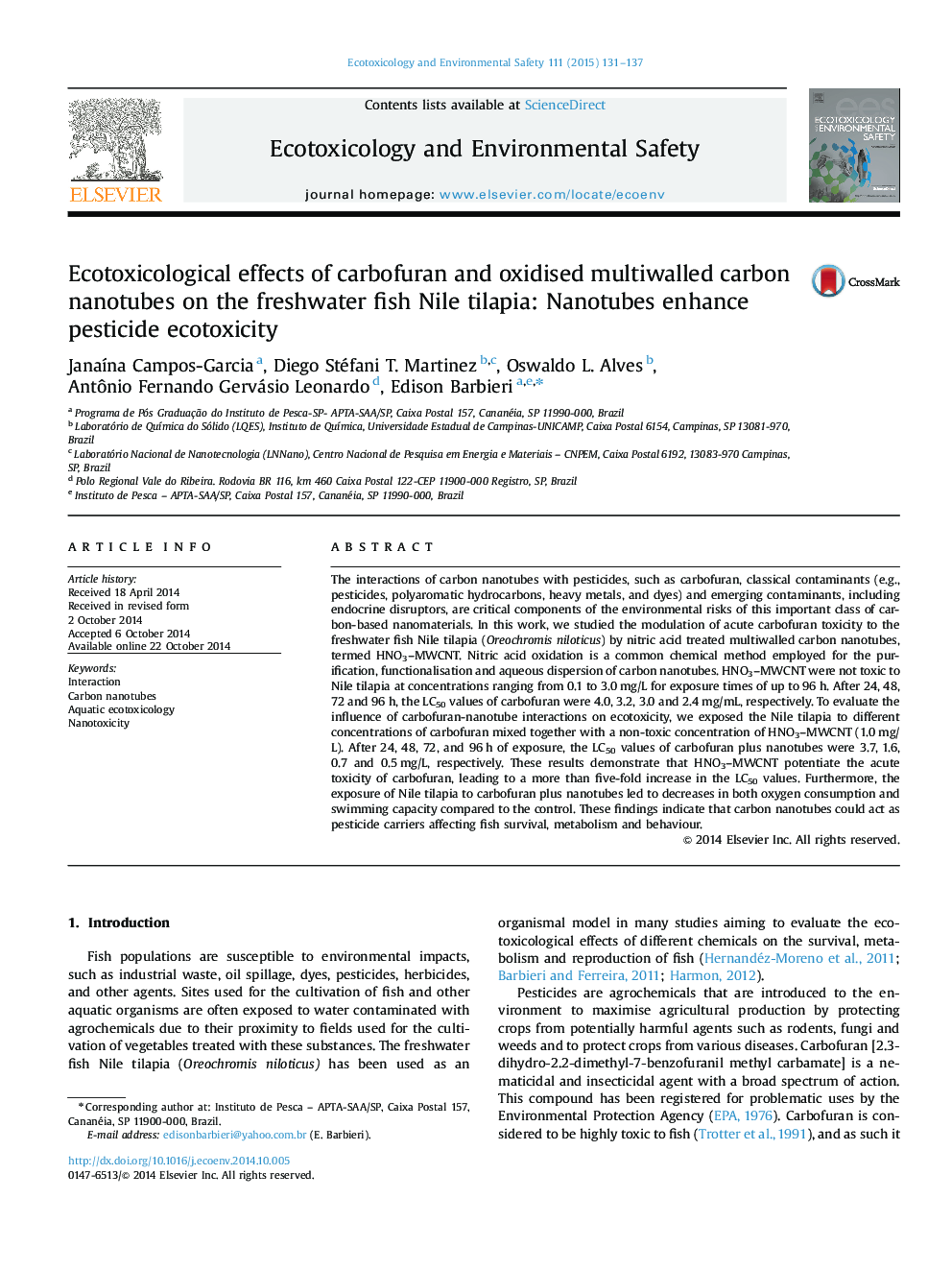| کد مقاله | کد نشریه | سال انتشار | مقاله انگلیسی | نسخه تمام متن |
|---|---|---|---|---|
| 4419859 | 1618952 | 2015 | 7 صفحه PDF | دانلود رایگان |

• Effect was found in the combination of carbofuran and HNO3–MWCNT.
• The oxygen specific consumption and that of swimming time to exhaustion were sensitive tools for the measurement of the acute effect of toxics.
• A dose dependent tendency decrease in oxygen specific consumption of O. niloticus exposed to HNO3–MWCNT was observed.
The interactions of carbon nanotubes with pesticides, such as carbofuran, classical contaminants (e.g., pesticides, polyaromatic hydrocarbons, heavy metals, and dyes) and emerging contaminants, including endocrine disruptors, are critical components of the environmental risks of this important class of carbon-based nanomaterials. In this work, we studied the modulation of acute carbofuran toxicity to the freshwater fish Nile tilapia (Oreochromis niloticus) by nitric acid treated multiwalled carbon nanotubes, termed HNO3–MWCNT. Nitric acid oxidation is a common chemical method employed for the purification, functionalisation and aqueous dispersion of carbon nanotubes. HNO3–MWCNT were not toxic to Nile tilapia at concentrations ranging from 0.1 to 3.0 mg/L for exposure times of up to 96 h. After 24, 48, 72 and 96 h, the LC50 values of carbofuran were 4.0, 3.2, 3.0 and 2.4 mg/mL, respectively. To evaluate the influence of carbofuran-nanotube interactions on ecotoxicity, we exposed the Nile tilapia to different concentrations of carbofuran mixed together with a non-toxic concentration of HNO3–MWCNT (1.0 mg/L). After 24, 48, 72, and 96 h of exposure, the LC50 values of carbofuran plus nanotubes were 3.7, 1.6, 0.7 and 0.5 mg/L, respectively. These results demonstrate that HNO3–MWCNT potentiate the acute toxicity of carbofuran, leading to a more than five-fold increase in the LC50 values. Furthermore, the exposure of Nile tilapia to carbofuran plus nanotubes led to decreases in both oxygen consumption and swimming capacity compared to the control. These findings indicate that carbon nanotubes could act as pesticide carriers affecting fish survival, metabolism and behaviour.
Journal: Ecotoxicology and Environmental Safety - Volume 111, January 2015, Pages 131–137